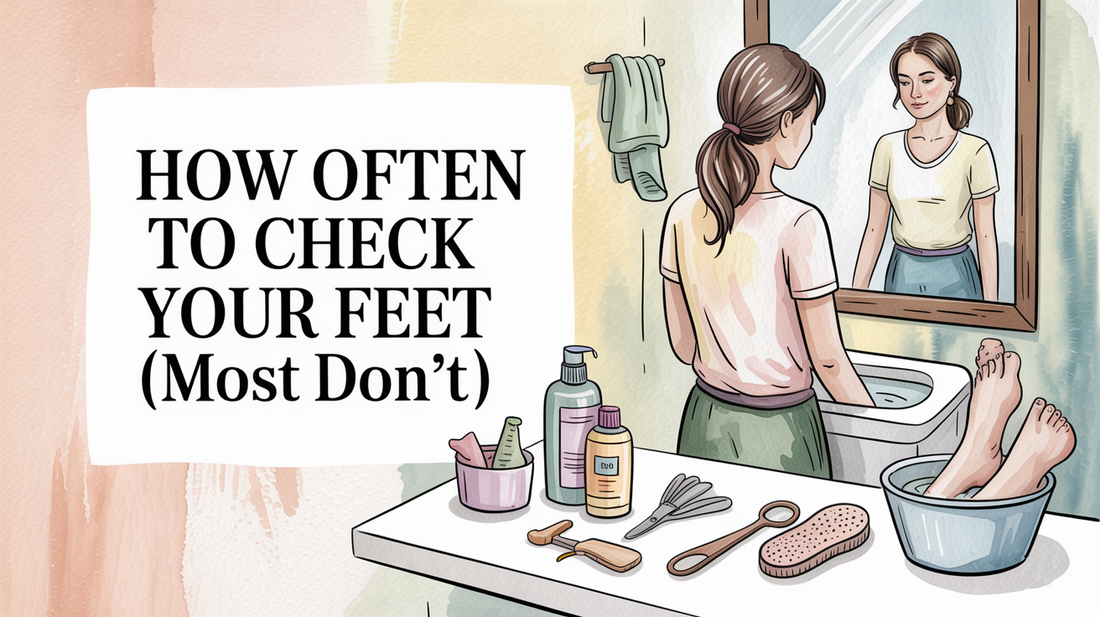How often should you check your feet for problems?
foot check frequency, preventive care, skin monitoring — Regularly monitoring your feet is crucial for maintaining their health. This post is organized into three clear sections that will help you establish a routine for foot check frequency, preventive care, and skin monitoring. By following these practices, you can take action tonight to keep your feet happy and healthy!
Daily quick scan 🧭
Taking just 1-2 minutes for a quick foot scan each day is essential for preventive foot care. This routine helps you spot potential issues early, ensuring you take action before they become more serious. Look for cuts, blisters, or any changes in skin color or texture, as these might indicate underlying problems.
During your daily inspection, feel for any swelling or tender areas. Don’t forget to check between your toes for moisture or cracks that may suggest fungal infections. Lastly, pay attention to your toenails for any discoloration or changes in thickness.
- Check for cuts and scrapes.
- Look for changes in skin color or texture.
- Inspect between toes for moisture or cracks.
- Feel for swelling or lumps.
- Examine toenails for ingrown edges or discoloration.
Try It Tonight: Calm, Fresh Feet ✨
- Wash feet with warm water and mild cleanser; dry thoroughly between toes.
- Apply a small amount of Kissable Feet where needed; massage until absorbed.
- Let skin breathe; slip on breathable socks if desired. Patch-test first if you’re new to this foot cream.
Weekly deeper look ✨
Setting aside time for a thorough foot examination each week is vital for a comprehensive assessment of foot health. This will allow you to inspect areas that might be missed in daily checks. Start by removing your shoes and socks completely to examine all surfaces, including soles and heels.
If possible, use a mirror to check hard-to-see areas or ask someone for help. Pay attention to any calluses or corns that could indicate pressure points. Additionally, ensure good circulation by checking the capillary refill in your toenails.
- Remove shoes and socks completely to check all surfaces.
- Use a mirror or ask for help for hard-to-see areas.
- Look for calluses or thickened skin.
- Assess circulation through capillary refill checks.
- Evaluate your footwear for any signs of wear or rough surfaces.
Why We Recommend a Gentle Helper 🌿
Kissable Feet is crafted for quick absorption and a soothing, non-sting feel. The nurse-crafted blend with tea tree, coconut, and calendula is designed for comfort and a clean finish—easy to add to a nightly routine.
- Fast-absorbing comfort—non-greasy finish.
- Gentle sensation suited for sensitive, overworked feet.
- Clean-leaning, bedtime-friendly scent.
High-risk schedules 🔍
For individuals at higher risk, more frequent and detailed foot monitoring is essential. Conditions that impair healing or sensation require tailored foot care to help prevent serious complications. For example, diabetics should perform daily inspections and visit a podiatrist every 3-6 months.
Those with peripheral artery disease should focus on daily checks for color changes or temperature differences. If you have neuropathy, remember that you may not feel injuries, so visual inspections are crucial. Keeping a schedule is vital for anyone with a history of foot ulcers or who is immunocompromised.
- Diabetics should inspect feet daily and see a podiatrist regularly.
- Peripheral artery disease patients need to monitor color and temperature.
- Neuropathy requires daily visual inspections for injuries.
- Previous foot ulcer sufferers should check feet twice daily.
- Immunocompromised individuals need daily monitoring for infections.

